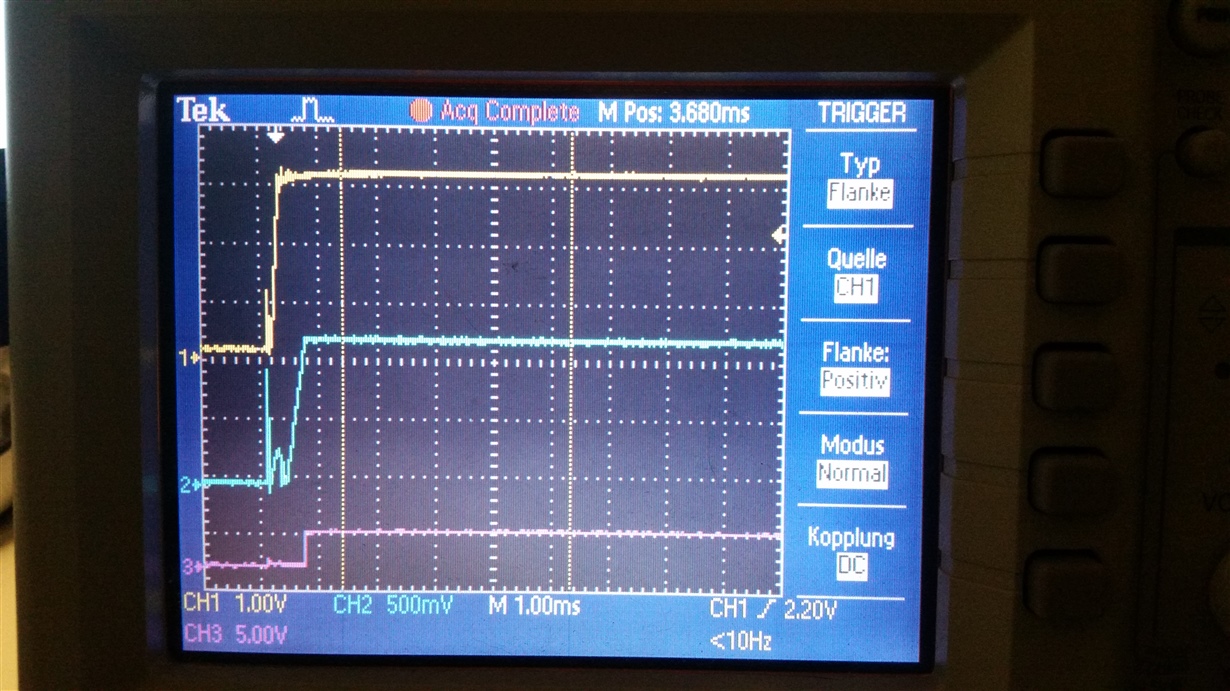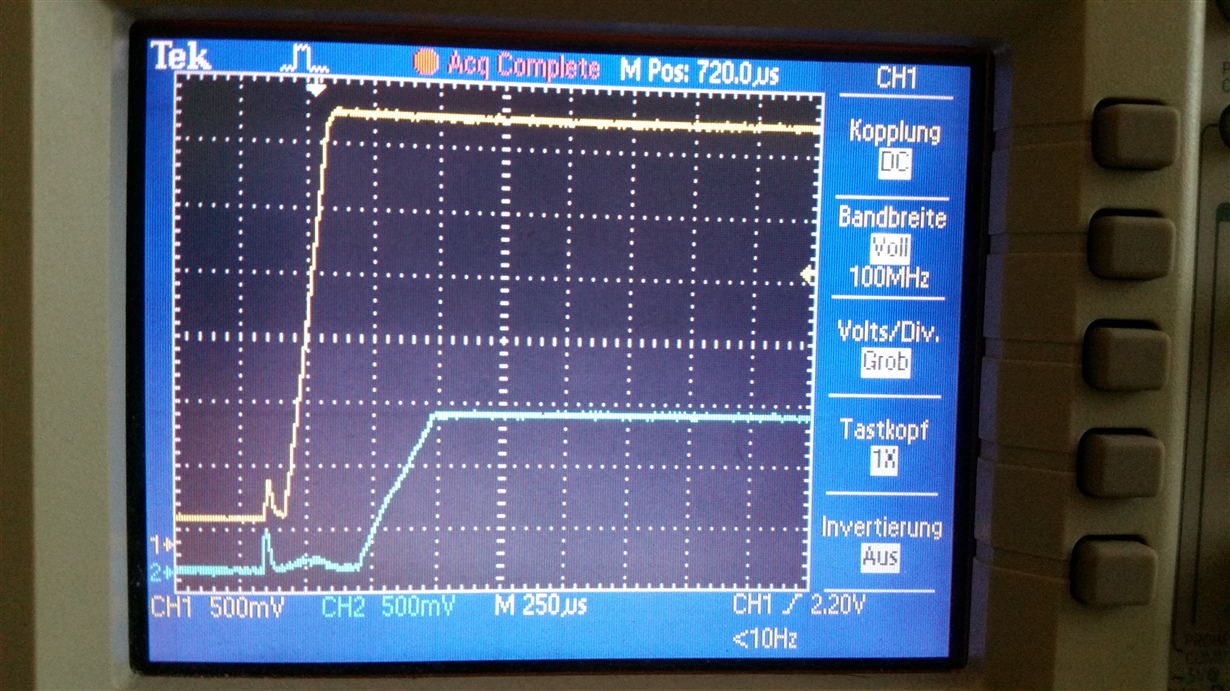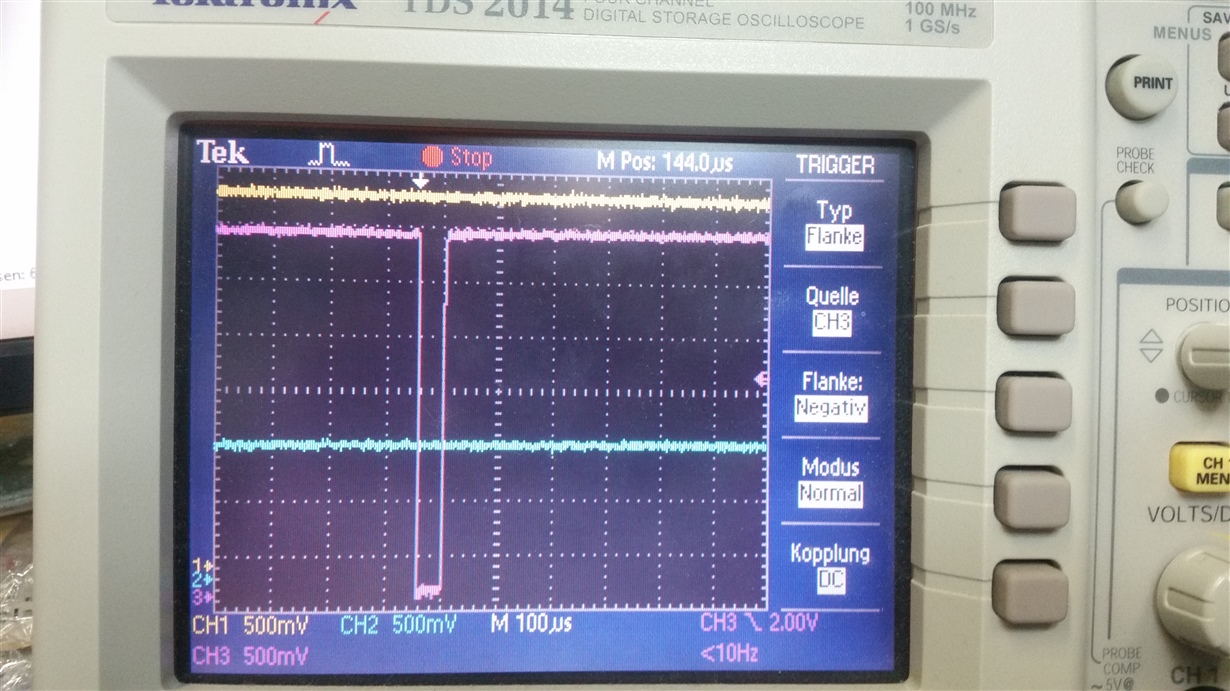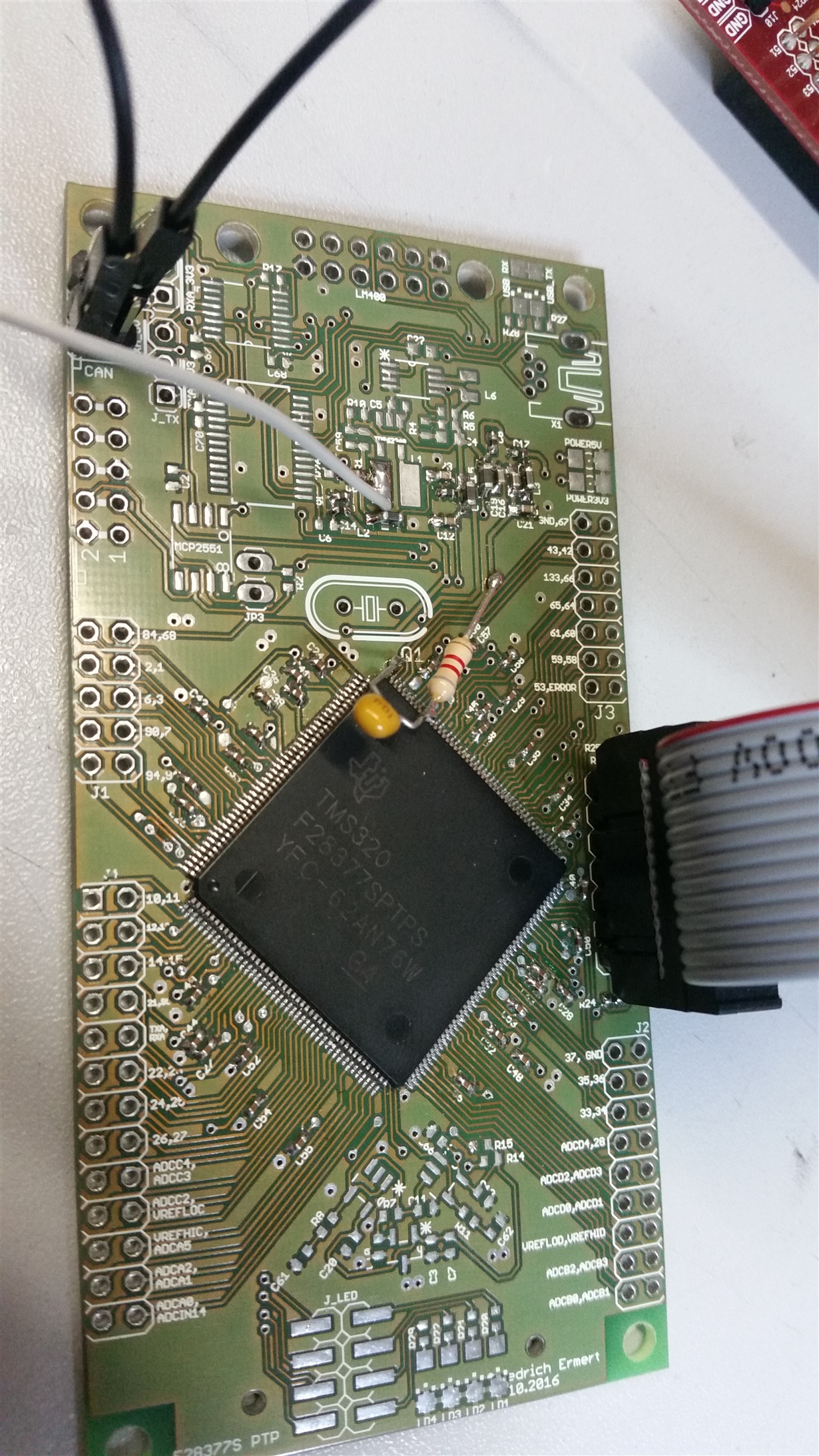Hello,
i designed my own PCB with a f28377S PTPT including 256MBit SDRAM on EMIF1.
My problem:
If i try to setup the SysPLL i get always the following errormessage:
Can't Run Target CPU:
(Error -1156 @ 0xB591)
Device may be operating in low-power mode. Do you want to bring it out of this mode? Choose 'Yes' to force the device to wake up and retry the operation. Choose 'No' to retry the operation without waking the device.
(Emulation package 6.0.407.6)
For the tests i am using the examplecode GPIO_TOGGLE from the newest version of ControllSuite.
The problem occours in the function InitSysCtrl();
I measured the supply voltages while the problem was happening and they might be ok.
I am using a 10MHz crystal and connected it like on the LAUNCHXL_F28337S.
If i dont use the InitSysCtrl(); the program works fine with internal 10MHz OSC_INT2 and teh GPIOs toggle.
But when i try to configure the SysPll nothing works.
I am using the function:
InitSysPll(XTAL_OSC,IMULT_40,FMULT_0,PLLCLK_BY_2);
I makes no difference whether i use the XTAL_OSC or the INT_OSC2. It doesnt work .
When i try to configure the max frequency of 200MHz (XTAL_OSC) or ~197MHz (INT_OSC2) the error occours when i enable the PLL clk at the line
ClkCfgRegs.SYSPLLCTL1.bit.PLLCLKEN = 1;
When i try to configure a lower frequency like 100MHz the function
InitSysPll(INT_OSC2,IMULT_19,FMULT_0,PLLCLK_BY_2);
works fine. But then i get the same problem when i try to init the peripheral clocks at line
InitPeripheralClocks();
When i reduce the number of peripherals to enable, the problem occours in
InitPieVectTable();
What i did until now:
-check the power supply.
- used onboard JTAG of the TMSF28335 evaluation board (its the one i usually work with, but there is no emif supported)
-used Spectrum Digital XDS100 V2 JTAG
-i measured for short-circuits or connection problems on the PCB
-i tried to have a look at the XCLKOUT after i configured the pll to a lower frequency with (for example)
GpioCtrlRegs.GPCGMUX1.bit.GPIO73 = 0;
GpioCtrlRegs.GPCMUX1.bit.GPIO73 = 3; // MUS GPIO TO XCLK OUT
GpioCtrlRegs.GPCDIR.bit.GPIO73 = 1;
ClkCfgRegs.CLKSRCCTL3.bit.XCLKOUTSEL = 0; //PUT SYSPLL TO XCLKOUT
ClkCfgRegs.XCLKOUTDIVSEL.bit.XCLKOUTDIV = 2;
But nothing happens on that pin. (?)
-i looked for XRSn Pin, but it's high
- i tried to erase the entire flash with UNIFLASH but it doesnt work. The Result:
I have not much experience and i dont know what i can do else.
I hope someone can help me.
Thank u for ur help.





